.png)

.png)


.png)
.png)
.png)
.png)

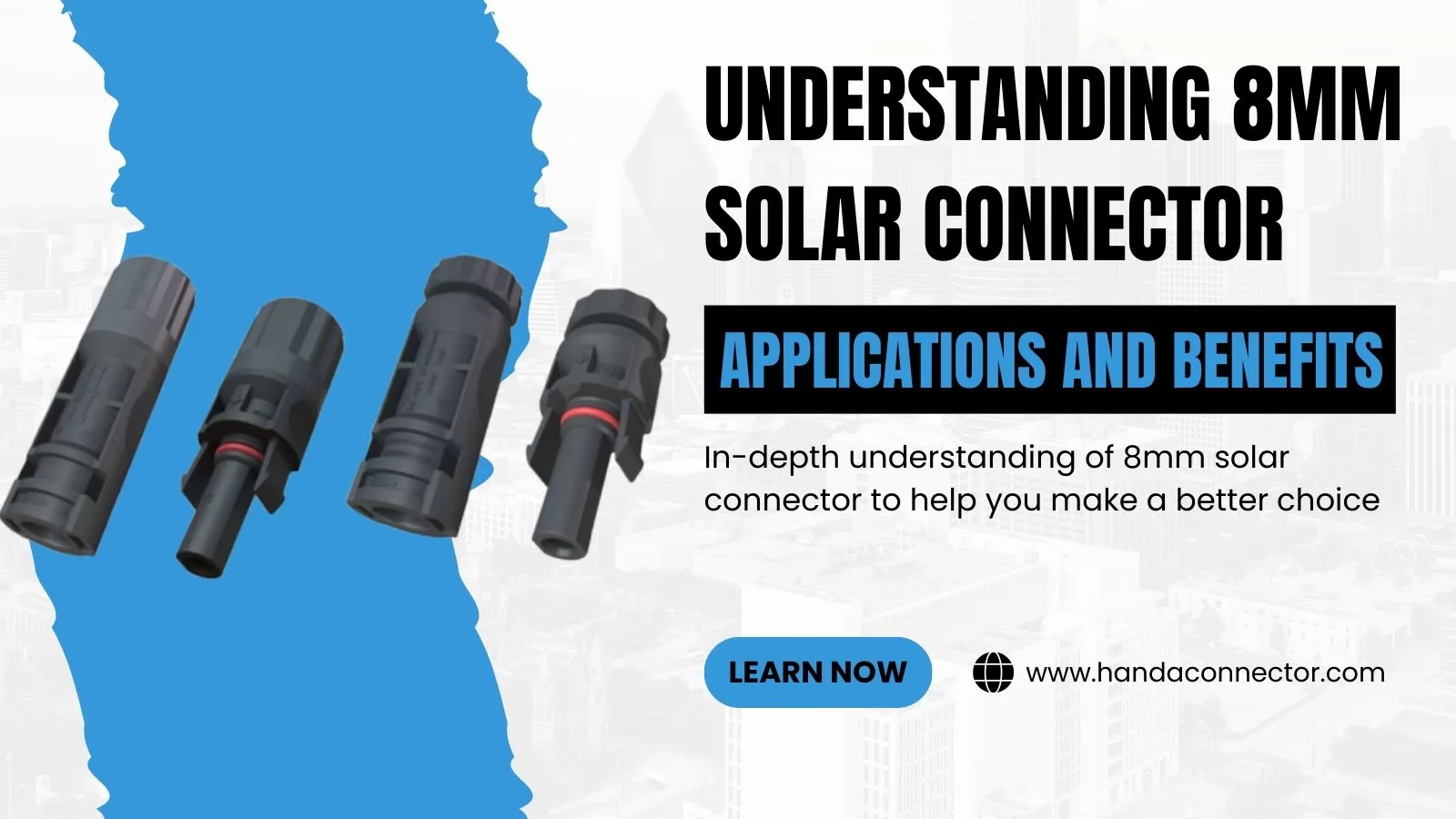
In the rapidly evolving solar energy industry, efficient and reliable electrical connections are paramount to system performance and longevity. Among the various connector types available in the market, 8mm solar connectors have emerged as a critical component for many solar power installations. These specialized connectors play a vital role in ensuring optimal energy transfer while providing necessary protection against environmental factors.
The global push toward renewable energy sources has accelerated the development and adoption of specialized components like 8mm solar connectors. With solar installations expanding across residential, commercial, and utility-scale projects, the demand for high-quality connectors that can withstand harsh conditions while delivering consistent performance has never been greater.
This comprehensive guide aims to explore every aspect of 8mm solar connectors – from their fundamental design and technical specifications to practical applications and comparative advantages. Whether you're a solar installation professional, system designer, or end-user seeking to understand the components of your solar power system, this article will provide valuable insights into why 8mm solar connectors have become an essential element in modern photovoltaic systems.
8mm solar connectors are specialized electrical connectors designed specifically for photovoltaic systems, with an 8mm diameter connection point that gives them their name. These connectors serve as the critical junction points within solar power systems, facilitating the transmission of DC electricity from solar panels to other system components such as combiner boxes, charge controllers, inverters, and batteries.
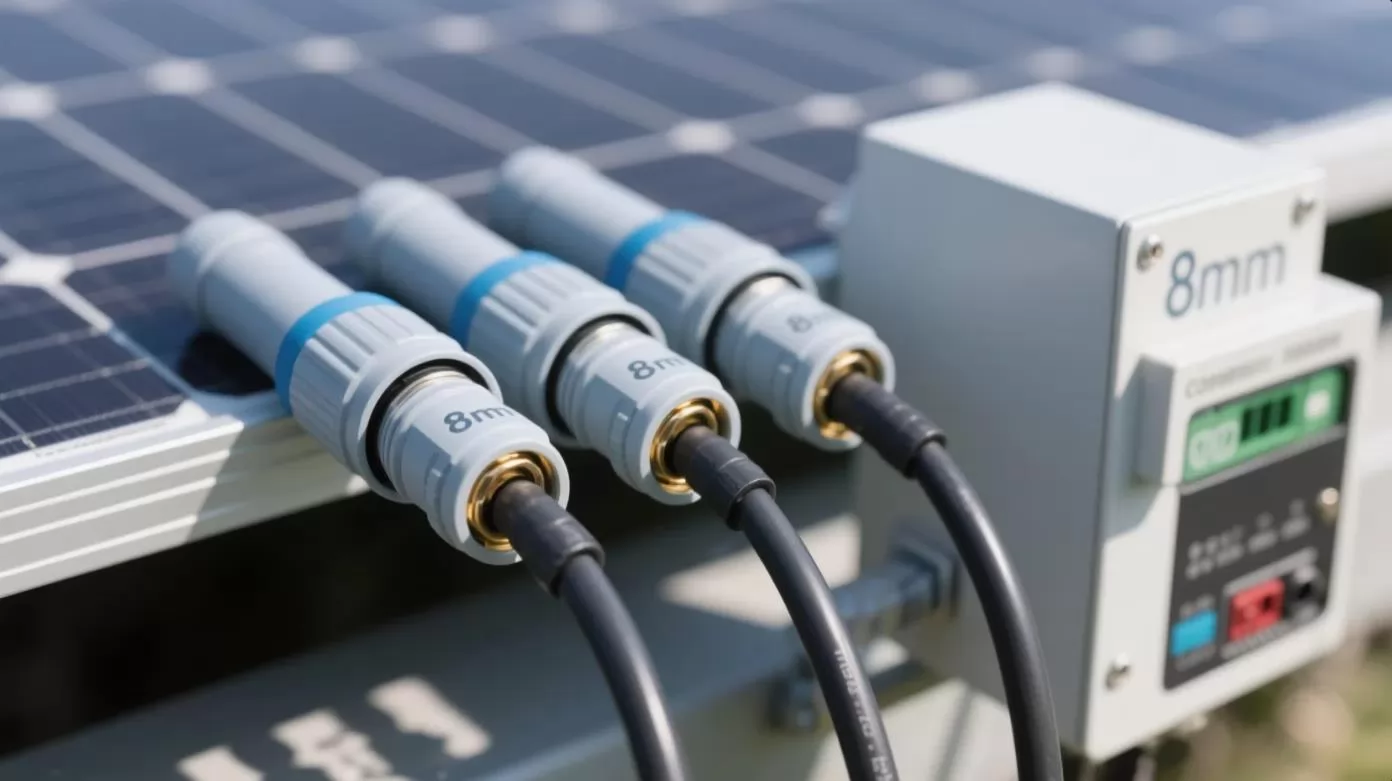
An 8mm solar connector typically consists of several key components:
8mm solar connectors evolved from earlier connector designs as the solar industry recognized the need for more robust and standardized connection solutions. They were developed to address some of the limitations of previous connector generations, offering improved weather resistance, higher current ratings, and enhanced safety features to meet the evolving requirements of modern solar installations.
Understanding the technical specifications of 8mm solar connectors is essential for ensuring their appropriate application and optimal performance in solar power systems.
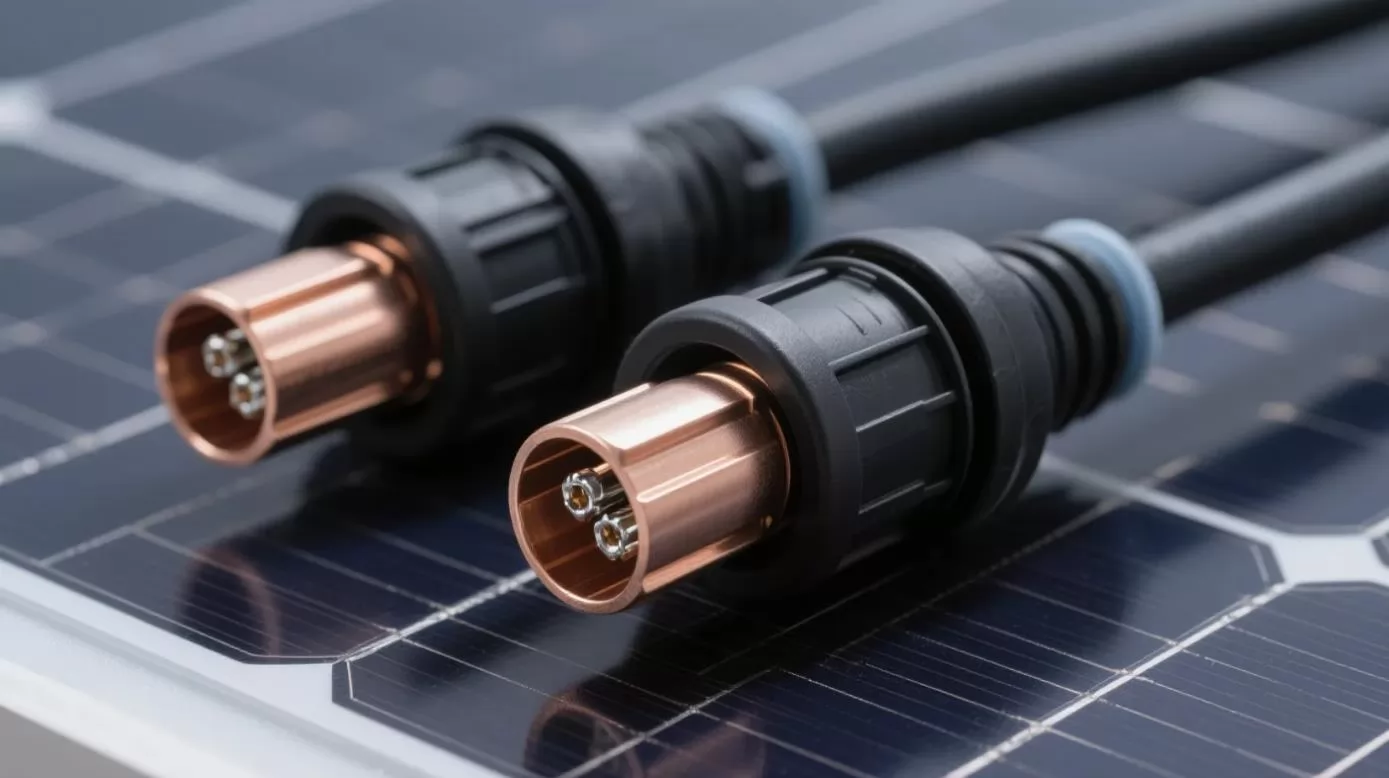
| Parameter | Typical Specification |
|---|---|
| Rated Current | 30-40 Amperes |
| Maximum System Voltage | 600-1500 VDC (model dependent) |
| Contact Resistance | ≤0.5 mΩ |
| Insulation Resistance | ≥1000 MΩ |
| Mating Cycles | 100+ times |
| Parameter | Specification |
|---|---|
| Operating Temperature Range | -40°C to +85°C (-40°F to +185°F) |
| IP Rating | IP67/IP68 (dust-tight and protected against temporary immersion) |
| UV Resistance | High (typically tested for 1000+ hours) |
| Cable Compatibility | 4mm² to 6mm² (12-10 AWG) |
| Pull-out Strength | ≥310N |
8mm solar connectors are constructed using materials specifically chosen for their electrical properties, durability, and resistance to environmental factors:
Contact Elements: Typically made from copper alloys with tin or silver plating to enhance conductivity and prevent oxidation.
Housing: Commonly manufactured from high-performance thermoplastics such as PPO (Polyphenylene Oxide), PA (Polyamide), or PBT (Polybutylene Terephthalate), which offer excellent electrical insulation, UV stability, and flame-retardant properties.
Sealing Components: Silicone or EPDM (Ethylene Propylene Diene Monomer) rubber, selected for their weatherproofing capabilities and long-term durability in outdoor environments.
Modern 8mm solar connectors incorporate several advanced design features:
Snap-lock Mechanism: Provides audible and tactile confirmation of proper connection.
Finger Touch Protection: Recessed contacts prevent accidental contact with live components.
Strain Relief: Integrated cable supports to prevent stress at the termination point.
Anti-rotation Design: Features that prevent twisting or rotating of connected cables.
Enhanced Sealing: Multi-layer sealing systems to ensure long-term weather resistance.
The 8mm solar connector category encompasses several variants and designs, each with specific features tailored to different application requirements.
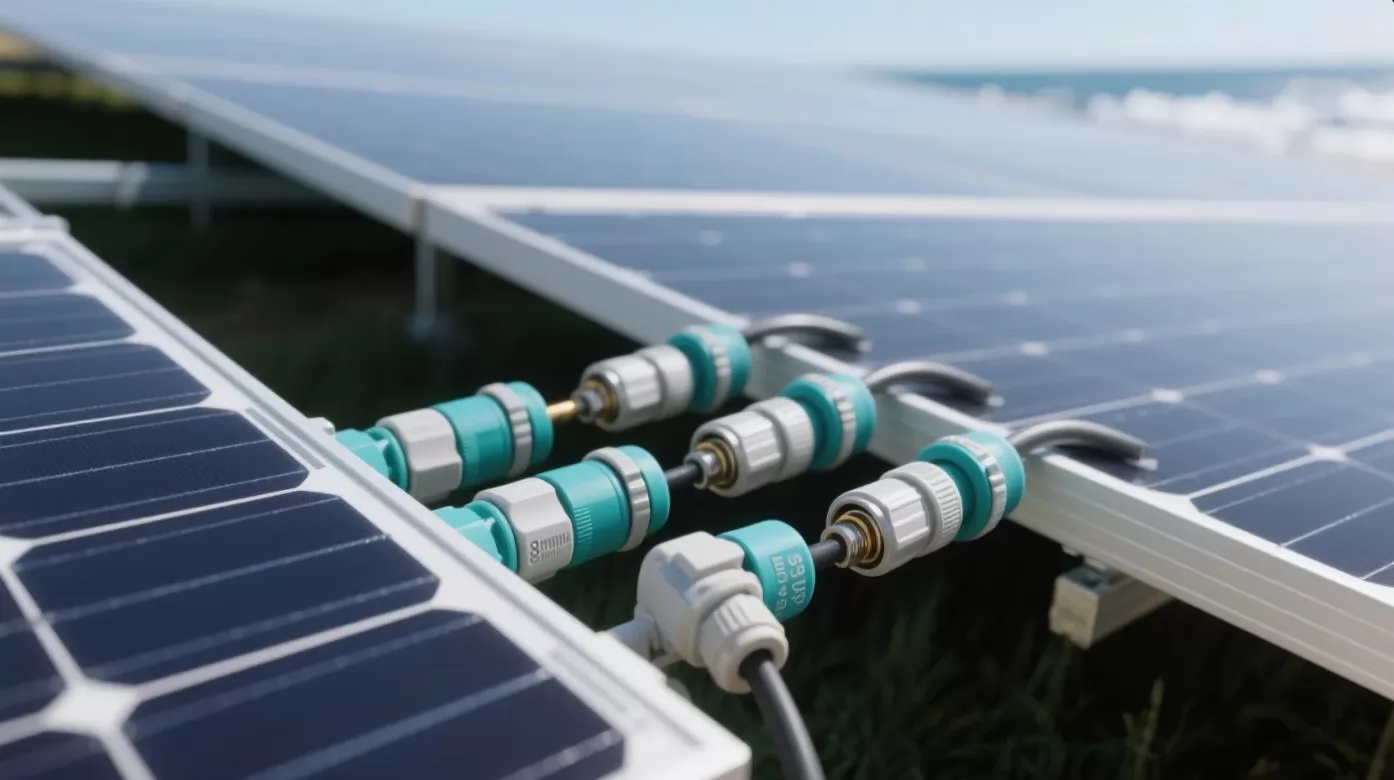
Standard 8mm Connectors: The baseline design offering reliable performance for most typical solar installations.
8mm Connectors with Enhanced Weather Protection: Featuring additional sealing elements for installations in particularly harsh environments such as coastal areas or regions with extreme temperature variations.
High-Current 8mm Connectors: Specially designed for high-output solar panels or systems with elevated current requirements.
8mm Quick-Connect Versions: Designed for rapid installation in field conditions, requiring minimal tools.
Branch Connectors: Special configurations that allow multiple panels to be connected in parallel using 8mm connector technology.
While 8mm connectors from different manufacturers may appear similar, there can be subtle differences in design and specifications that affect cross-compatibility. Industry best practices generally recommend using connectors from the same manufacturer throughout a solar installation to ensure optimal performance and maintain warranty coverage. Using incompatible connectors can result in increased contact resistance, connection failures, and potential safety hazards.
The market includes both proprietary 8mm connector designs from established manufacturers and generic alternatives. Proprietary designs often feature patented elements that may offer enhanced performance or reliability but typically come at a premium price point. Generic 8mm connectors provide cost advantages but require thorough vetting to ensure they meet all necessary quality and performance standards.
8mm solar connectors find application across a diverse range of solar energy systems and installation types, demonstrating their versatility and adaptability to different environments and requirements.
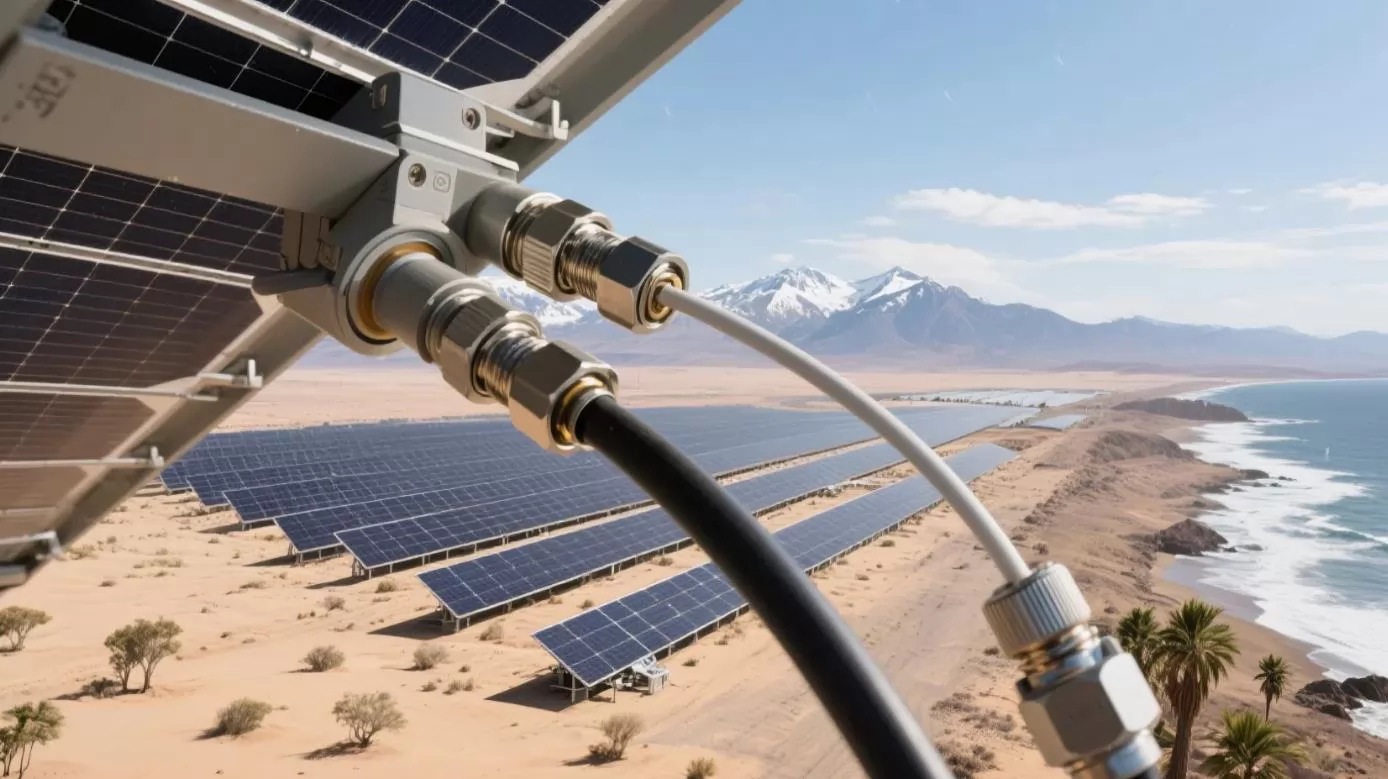
In residential applications, 8mm connectors provide homeowners with reliable connection points for rooftop and ground-mounted solar arrays. Their weather-resistant properties make them suitable for the typical 25+ year lifespan expected of residential solar installations. The push-and-click design allows for safe and straightforward installation, which is particularly valuable when homeowners may need to disconnect panels for roof maintenance or system modifications.
Commercial solar deployments benefit from the high current-carrying capacity and robust design of 8mm connectors. These installations often involve larger panel arrays with higher voltage and current requirements, where the performance specifications of 8mm connectors prove advantageous. The durability of these connectors helps minimize maintenance requirements, which is crucial for reducing the total cost of ownership in commercial applications.
In utility-scale installations, where thousands of panels may be deployed across extensive areas, 8mm connectors offer the reliability and standardization necessary for efficient large-scale operations. Their ability to withstand extreme weather conditions while maintaining consistent electrical performance makes them suitable for solar farms in diverse geographical locations. The standardized design also simplifies maintenance protocols and spare parts inventory management for operations teams.
Off-Grid Systems: 8mm connectors are widely used in remote off-grid solar installations where reliability is paramount due to limited access for maintenance.
Mobile Solar Solutions: RVs, boats, and portable solar generators benefit from the secure connections and weatherproof design of 8mm connectors.
Solar+Storage Systems: The high current ratings make these connectors suitable for solar systems integrated with battery storage solutions.
Building-Integrated Photovoltaics (BIPV): Architects and designers incorporate 8mm connectors in BIPV installations where aesthetic considerations must be balanced with technical performance.
Several notable solar installations around the world showcase the versatility of 8mm solar connectors:
Desert solar farms where connectors must withstand extreme temperature fluctuations and high UV exposure
Coastal installations exposed to salt spray and high humidity
Alpine solar arrays subject to snow loads and freezing conditions
Tropical installations where heavy rainfall and high humidity present particular challenges
In each of these environments, properly specified 8mm connectors have demonstrated their ability to maintain electrical integrity and system performance under challenging conditions.
The growing popularity of 8mm solar connectors can be attributed to several significant advantages they offer over alternative connection methods. Understanding these benefits helps explain why they have become a preferred choice in many solar installations.
8mm solar connectors excel in electrical performance metrics that directly impact system efficiency and reliability:
Low Contact Resistance: Typically less than 0.5 mΩ, minimizing power losses at connection points.
Consistent Current Rating: Ability to maintain rated current capacity over time without degradation.
High Dielectric Strength: Excellent electrical insulation properties prevent leakage currents and short circuits.
Stable Performance Under Load: Minimal performance variation under different load conditions and temperatures.
Beyond electrical characteristics, 8mm connectors offer important mechanical and environmental benefits:
Robust Locking Mechanism: Prevents accidental disconnection due to vibration, wind, or thermal expansion/contraction cycles.
Chemical Resistance: Withstands exposure to common environmental contaminants including acid rain, industrial pollutants, and agricultural chemicals.
Thermal Cycling Endurance: Maintains integrity through repeated expansion and contraction due to temperature changes.
Impact and Abrasion Resistance: Durable housing protects internal components from physical damage during installation and maintenance.
From an operational perspective, 8mm connectors offer several practical advantages:
Tool-free Connection/Disconnection: Many 8mm connector designs can be manually connected and disconnected without specialized tools, simplifying field operations.
Visual Verification: Clear indicators or design elements that confirm proper connection, reducing installation errors.
Minimal Maintenance: Once properly installed, 8mm connectors typically require little to no maintenance over their operational life.
Standardized Components: Common specifications facilitate inventory management and replacement part sourcing.
Important Note: While 8mm solar connectors offer numerous benefits, achieving these advantages depends on selecting quality components from reputable manufacturers and ensuring proper installation according to recommended procedures and applicable electrical codes.
Proper installation of 8mm solar connectors is critical to ensure system performance, safety, and long-term reliability. Following established guidelines helps prevent common issues such as water ingress, increased contact resistance, or mechanical failure.
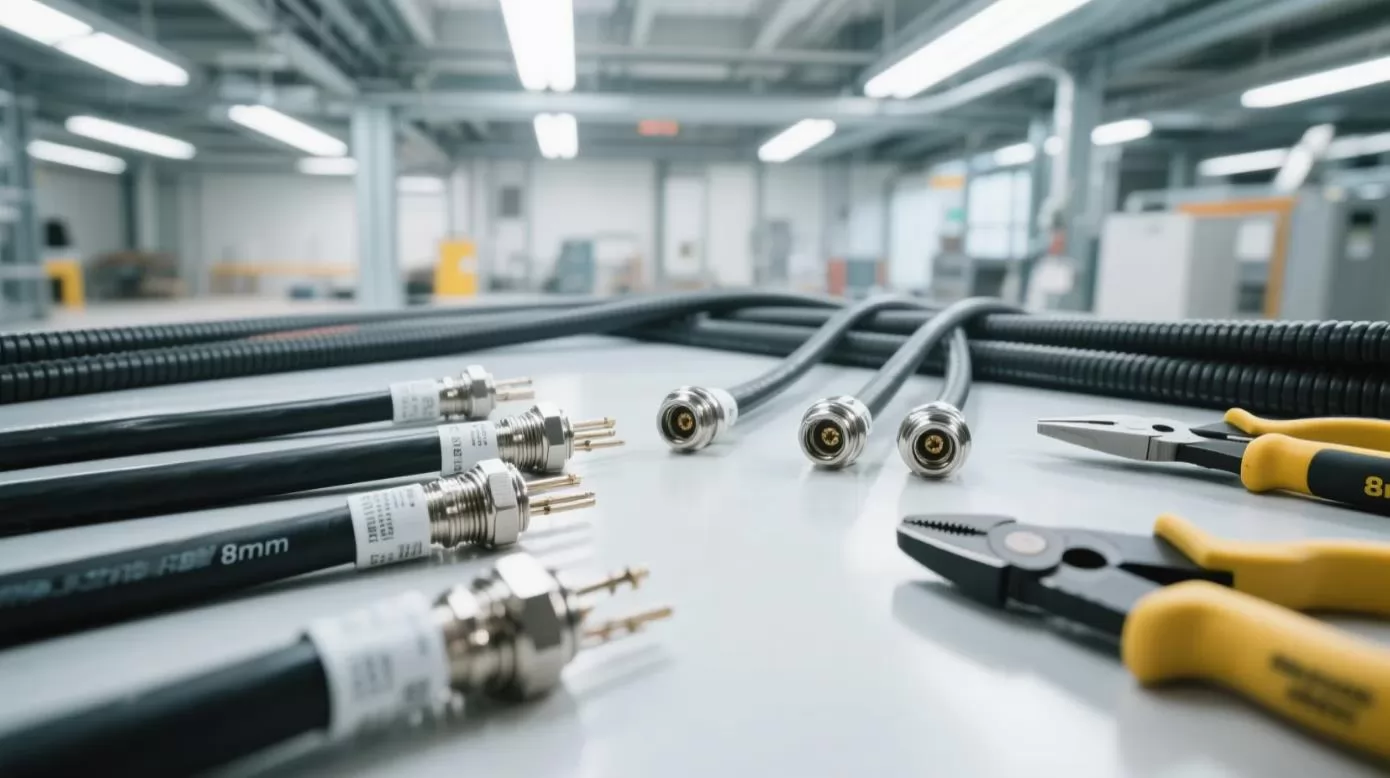
Before beginning the installation process, several factors should be evaluated:
System Specifications: Verify that the selected 8mm connectors meet or exceed the electrical and environmental requirements of the specific installation.
Cable Compatibility: Ensure the selected cables match the connector specifications for size, type, and temperature rating.
Tool Availability: Confirm that appropriate crimping, stripping, and assembly tools are available and in good condition.
Manufacturer's Instructions: Review and follow the specific installation guidelines provided by the connector manufacturer.
Regulatory Compliance: Check that the installation will comply with local electrical codes and standards.
Cable Preparation:
Measure and cut the solar cable to the required length, allowing for stress relief.
Strip the cable insulation to the specified length, typically 7-10mm for most 8mm connector designs.
Take care not to nick or damage the copper conductors during stripping.
Contact Crimping:
Insert the stripped wire into the metal contact element.
Use the manufacturer-recommended crimping tool and die set to secure the contact to the wire.
Perform a gentle pull test to verify the crimp connection is secure.
Connector Assembly:
Insert the crimped contact into the connector housing, ensuring it locks into position.
Install any required sealing elements or gaskets.
Assemble and tighten the cable gland or strain relief components.
Connection Verification:
Visually inspect the completed connector for proper assembly.
Ensure no copper strands are visible outside the connection point.
Verify that sealing elements are properly positioned.
Incorrect Crimping: Under-crimping or over-crimping can lead to loose connections or damaged conductors.
Improper Stripping: Exposing too much conductor or damaging the wire during stripping.
Misaligned Components: Failing to properly align pins and sockets during assembly.
Damaged Seals: Cutting or pinching O-rings or gaskets during installation.
Insufficient Tightening: Not adequately securing cable glands or housing components.
Mixing Components: Using parts from different manufacturers or connector series.
When integrating 8mm connectors into a solar power system, compatibility is a critical consideration:
Manufacturer Compatibility: While 8mm connectors may appear similar across brands, subtle design differences can affect performance and safety. Industry best practice is to use connectors from the same manufacturer throughout an installation.
System Voltage and Current: Ensure the selected connectors are rated for the maximum system voltage and current, including any potential surge conditions.
Environmental Factors: For installations in extreme environments, verify that the selected connectors have appropriate ratings for temperature range, UV exposure, and moisture resistance.
Cable Type and Size: Match the connector to the specific cable type and cross-sectional area being used in the installation.
Safety Note: Always de-energize solar arrays before attempting to connect or disconnect 8mm solar connectors. While these connectors have safety features to prevent accidental contact with live components, working with de-energized systems is the safest approach.
The solar industry employs various connector types, each with distinct characteristics. Understanding how 8mm connectors compare to alternatives helps in making informed decisions for specific applications.
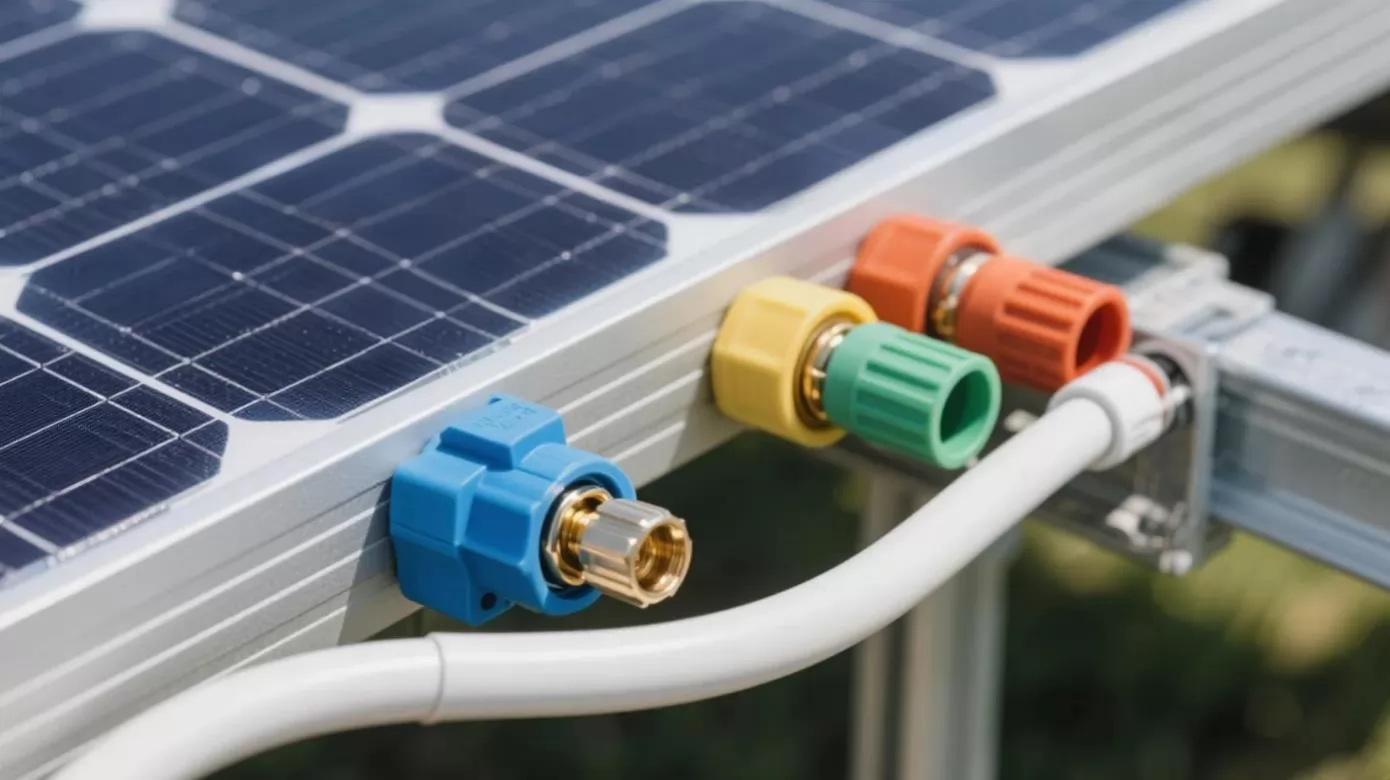
MC4 connectors are among the most widely used in the solar industry:
| Feature | 8mm Connectors | MC4 Connectors |
|---|---|---|
| Current Rating | Typically 30-40A | Typically 30A |
| Voltage Rating | Up to 1500V DC | Up to 1000-1500V DC |
| Connection Mechanism | Push-lock system | Snap-lock system |
| Disconnection | May require special tool | Requires special unlocking tool |
| Physical Size | 8mm diameter connection point | 4mm diameter connection point |
| Market Adoption | Growing, significant in certain regions | Industry standard in many markets |
MC3 represents an earlier generation of solar connectors:
| Feature | 8mm Connectors | MC3 Connectors |
|---|---|---|
| Weather Resistance | IP67/IP68 rating | Lower IP rating |
| Safety Features | Enhanced touch protection | Basic touch protection |
| Current Market Status | Actively manufactured and supported | Legacy system, limited availability |
| Locking Security | Advanced locking mechanisms | Simpler locking system |
T4 connectors represent another alternative in the solar connector market:
| Feature | 8mm Connectors | T4 Connectors |
|---|---|---|
| Contact Material | Typically copper with tin/silver plating | Similar materials |
| Installation Complexity | Moderate | Moderate to high |
| Regional Prevalence | Varies by market | Strong in specific regional markets |
Different connector types may excel under particular environmental conditions:
High-Temperature Environments: 8mm connectors typically maintain excellent performance in high-temperature conditions due to their robust insulation materials and thermal management design.
Coastal/Marine Installations: The enhanced sealing features of quality 8mm connectors make them particularly suitable for installations near saltwater environments.
Snow and Ice Regions: The secure locking mechanism of 8mm connectors helps prevent disconnection during freeze-thaw cycles that can affect solar installations in colder climates.
High Wind Areas: The positive locking features provide additional security in locations prone to vibration and mechanical stress from wind.
When evaluating connector options, several factors influence the total cost-benefit equation:
Initial Cost: While 8mm connectors may have a higher unit cost than some alternatives, their robust design can translate to lower replacement rates over the system lifetime.
Installation Labor: The relatively straightforward installation process of 8mm connectors can reduce labor costs during system deployment.
Maintenance Requirements: The durability and weather resistance of quality 8mm connectors typically result in lower maintenance needs over the system lifetime.
System Downtime: Reliable connections minimize system downtime due to connection failures, protecting the overall return on investment.
Compatibility with Future Upgrades: Standardized connector designs facilitate system expansions and upgrades without requiring wholesale replacement of connection components.
Project-specific factors often determine which connector type represents the optimal choice:
Residential Systems: Ease of installation and long-term reliability may favor 8mm connectors, particularly in regions with challenging weather conditions.
Commercial Projects: Higher current ratings and robust environmental protection make 8mm connectors suitable for many commercial applications where performance requirements are more demanding.
Utility-Scale Installations: The specific environmental conditions and system design parameters typically drive connector selection, with 8mm connectors often preferred in high-reliability contexts.
Off-Grid and Mobile Applications: The secure connection and weatherproofing features of 8mm connectors are particularly valuable in portable and off-grid systems subjected to movement and variable conditions.
Selecting the appropriate 8mm solar connectors involves evaluating multiple factors to ensure optimal system performance, safety, and longevity. This section explores key considerations that should guide the selection process.
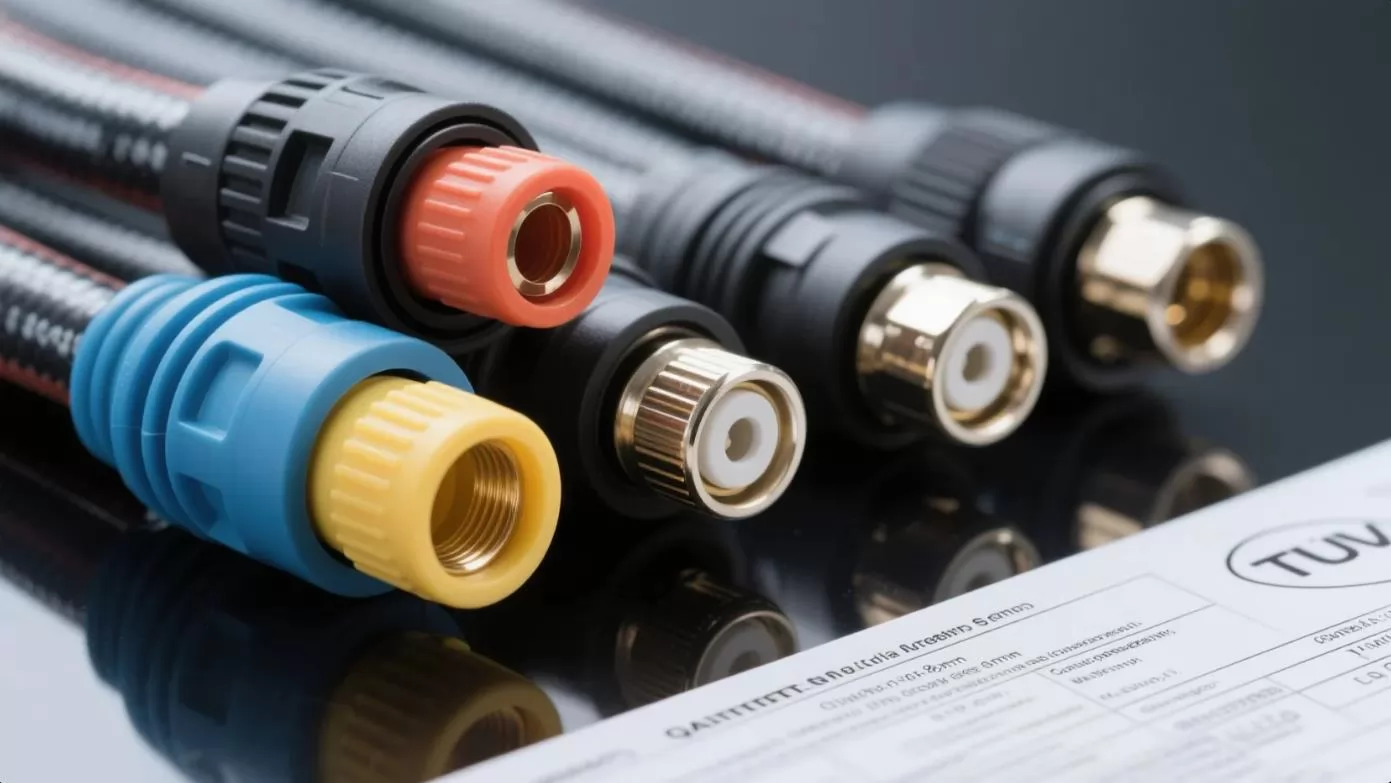
Not all 8mm connectors are created equal. Quality variations can significantly impact performance and reliability:
Material Quality: Premium connectors use high-grade polymers with superior UV stabilizers and flame-retardant properties.
Certification Standards: Look for connectors certified to TÜV, UL, or equivalent standards that verify compliance with safety and performance requirements.
Manufacturing Consistency: Established manufacturers with robust quality control processes typically deliver more consistent products.
Testing Documentation: Reputable suppliers provide comprehensive test reports demonstrating compliance with relevant industry standards.
The specific requirements of the solar power system should drive connector selection:
System Voltage: Ensure the selected connectors are rated for the maximum system voltage, including any potential surge conditions.
Current Requirements: Choose connectors with appropriate current ratings for the specific circuit, including safety margins.
Cable Compatibility: Verify that the connectors are designed for the specific cable type and cross-sectional area being used.
Connection Frequency: For systems where frequent connection/disconnection is anticipated, select connectors with higher mating cycle ratings.
The installation environment plays a crucial role in connector selection:
Temperature Range: Ensure the selected connectors can withstand the highest and lowest temperatures expected at the installation site.
Humidity and Precipitation: Higher IP ratings provide better protection in wet environments.
UV Exposure: Installations in locations with intense sunlight require connectors with superior UV resistance.
Salt Exposure: Coastal installations benefit from connectors with enhanced corrosion resistance.
Chemical Exposure: Consider potential exposure to agricultural chemicals, industrial emissions, or other environmental contaminants.
Practical aspects of installation should not be overlooked:
Tool Requirements: Some connector systems require specialized crimping tools, which represent an additional investment.
Installer Expertise: More complex connector systems may require additional training for installation personnel.
Accessibility: Consider how easily the connectors can be accessed for installation and potential future maintenance.
Space Constraints: The physical dimensions of the connectors and their minimum bend radius requirements may impact installation options in confined spaces.
With solar systems designed to operate for 25+ years, connector selection should consider future support:
Manufacturer Stability: Select connectors from established manufacturers likely to remain in business throughout the system lifetime.
Standardization: Widely adopted connector types are more likely to remain available for replacement and system expansion.
Warranty Support: Evaluate the manufacturer's warranty terms and historical reputation for honoring warranty claims.
Local Availability: Consider the availability of compatible components in the local market for future maintenance needs.
Decision-Making Framework: When selecting 8mm connectors, prioritize safety, reliability, and long-term performance over initial cost savings. The connectors represent a small fraction of total system cost but can have a disproportionate impact on system reliability and maintenance requirements.
While quality 8mm solar connectors are designed for minimal maintenance, regular inspection and proper troubleshooting procedures can help ensure optimal performance throughout the system lifetime.
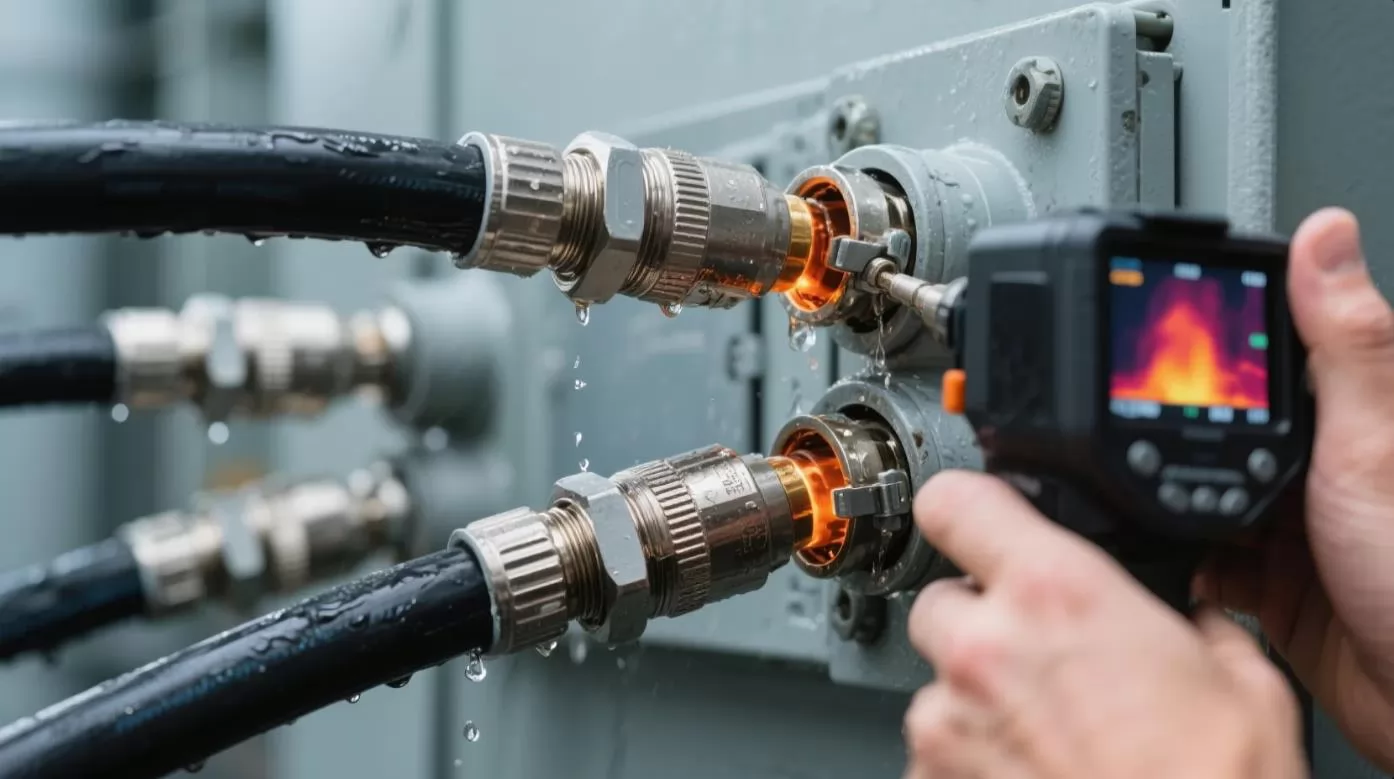
Implementing a preventive maintenance program helps identify potential issues before they lead to system failures:
Visual Inspections:
Check for physical damage, discoloration, or deformation of connector housings
Look for signs of water ingress or contamination
Inspect for proper engagement of locking mechanisms
Examine cable entries for strain or damage
Thermal Imaging:
Periodically scan connections with an infrared camera to identify hot spots that may indicate high resistance connections
Compare temperatures across similar connections to identify anomalies
Connection Integrity:
Verify that connections remain secure and show no signs of loosening
Check that strain relief components continue to function properly
Environmental Protection:
Ensure sealing components remain intact and functional
Check that connector positioning prevents water pooling
| System Type | Recommended Inspection Frequency |
|---|---|
| Residential | Annual |
| Commercial | Semi-annual |
| Utility-Scale | Quarterly |
| High-Risk Environments* | Quarterly or more frequently |
*High-risk environments include coastal areas, locations with extreme temperature variations, or sites with high pollution levels.
Even with quality components and proper installation, issues may occasionally arise. Here's how to identify and address common problems:
| Symptom | Possible Causes | Recommended Actions |
|---|---|---|
| Higher than normal temperature at connection point |
- Loose connection - Corrosion - Improper crimping |
- De-energize system - Inspect connection - Replace if necessary |
| Visible corrosion or oxidation |
- Water ingress - Damaged seals - Environmental contamination |
- Replace connector - Verify proper installation - Consider environmental protection measures |
| Intermittent connection |
- Loose connection - Mechanical stress - Thermal cycling damage |
- Check locking mechanism - Ensure proper strain relief - Replace if damaged |
| Cracked or damaged housing |
- Physical impact - UV degradation - Thermal stress |
- Replace connector - Evaluate installation location - Consider additional protection |
When issues are identified, deciding between repair and replacement depends on several factors:
Safety-Critical Issues: Any damage that compromises electrical insulation or mechanical integrity warrants immediate replacement.
Water Ingress: Connectors showing evidence of internal moisture should be replaced rather than repaired.
Contact Damage: Issues with the metal contact elements typically require connector replacement.
Minor External Damage: Superficial damage that doesn't affect functionality or weatherproofing may be monitored rather than immediately addressed.
As a general rule, connector repair in the field is not recommended. The controlled environment and specialized tools available in manufacturing facilities are difficult to replicate in the field, potentially compromising connector performance and safety.
Safety Warning: Always de-energize solar arrays before attempting any maintenance or troubleshooting procedures involving electrical connections. Follow appropriate lockout/tagout procedures and verify the absence of voltage before handling connectors.
Compliance with established standards and certifications is crucial for ensuring the safety, performance, and compatibility of 8mm solar connectors in photovoltaic installations.
Several important standards govern the design, testing, and application of solar connectors:
IEC 62852: International standard specifically addressing connectors for DC applications in photovoltaic systems, covering safety requirements and tests.
UL 6703: North American standard for connectors for use in photovoltaic systems, focusing on safety aspects and performance under various conditions.
IEC 60998: General standard for connecting devices for low-voltage circuits for household and similar purposes.
IEC 60529: Defines the IP (Ingress Protection) rating system that quantifies protection against solid objects and liquids.
EN 50521: European standard for connectors for photovoltaic systems, specifying safety and performance requirements.
IEC 61215/61730: While primarily focused on PV modules, these standards include requirements for connection means that influence connector design.
Several organizations provide testing and certification services for solar connectors:
TÜV (Technischer Überwachungsverein): German-based organization offering testing and certification services globally, with specific programs for photovoltaic components.
UL (Underwriters Laboratories): North American safety certification company with extensive programs for electrical components including solar connectors.
ETL (Intertek): Provides testing and certification to North American standards as an alternative to UL.
CSA (Canadian Standards Association): Develops standards and provides certification services recognized in Canada and internationally.
JET (Japan Electrical Safety & Environment Technology Laboratory): Provides certification for the Japanese market.
CQC (China Quality Certification Centre): Issues certifications for products in the Chinese market.
To achieve certification, 8mm solar connectors must undergo rigorous testing regimens that typically include:
| Test Category | Specific Tests | Purpose |
|---|---|---|
| Electrical Performance |
- Contact resistance - Insulation resistance - Voltage withstand - Current carrying capacity |
Verify that connectors can safely handle specified electrical loads |
| Mechanical Durability |
- Insertion/withdrawal force - Terminal strength - Impact resistance - Vibration resistance |
Ensure mechanical integrity under normal use conditions |
| Environmental Resistance |
- Temperature cycling - Humidity exposure - UV exposure - Salt spray resistance |
Confirm performance under various environmental stresses |
| Safety Testing |
- Flammability - Temperature rise - Fault current withstand - Touch protection |
Validate safety features and performance under abnormal conditions |
Requirements for solar connectors can vary significantly between regions:
North America: UL certification is typically required, with emphasis on fire safety and robust performance under extreme conditions.
European Union: CE marking indicates compliance with relevant European directives, often accompanied by TÜV certification.
Australia/New Zealand: The AS/NZS standards apply, with particular attention to UV resistance and performance in high-temperature environments.
Japan: JET certification addresses the specific requirements of the Japanese market, including earthquake resistance.
China: CQC certification is often required for products sold in the Chinese market.
When evaluating 8mm connectors for a specific application, standards compliance should be a primary consideration:
Validation of Claims: Certification by recognized bodies provides independent verification of manufacturer performance claims.
Insurance and Financing: Many insurance providers and financial institutions require certified components for coverage and financing of solar installations.
Regulatory Compliance: Local electrical codes and building regulations often mandate the use of certified components.
Warranty Protection: Some system warranties may be voided if non-certified components are used.
Note on Documentation: Always request and maintain documentation of standards compliance and certifications for all components used in a solar installation. This documentation may be required for permitting, inspection, insurance, and warranty claims throughout the system lifetime.
The solar industry continues to evolve rapidly, driving innovation in connector technology. Understanding emerging trends helps system designers and installers prepare for future developments while making informed decisions for current projects.
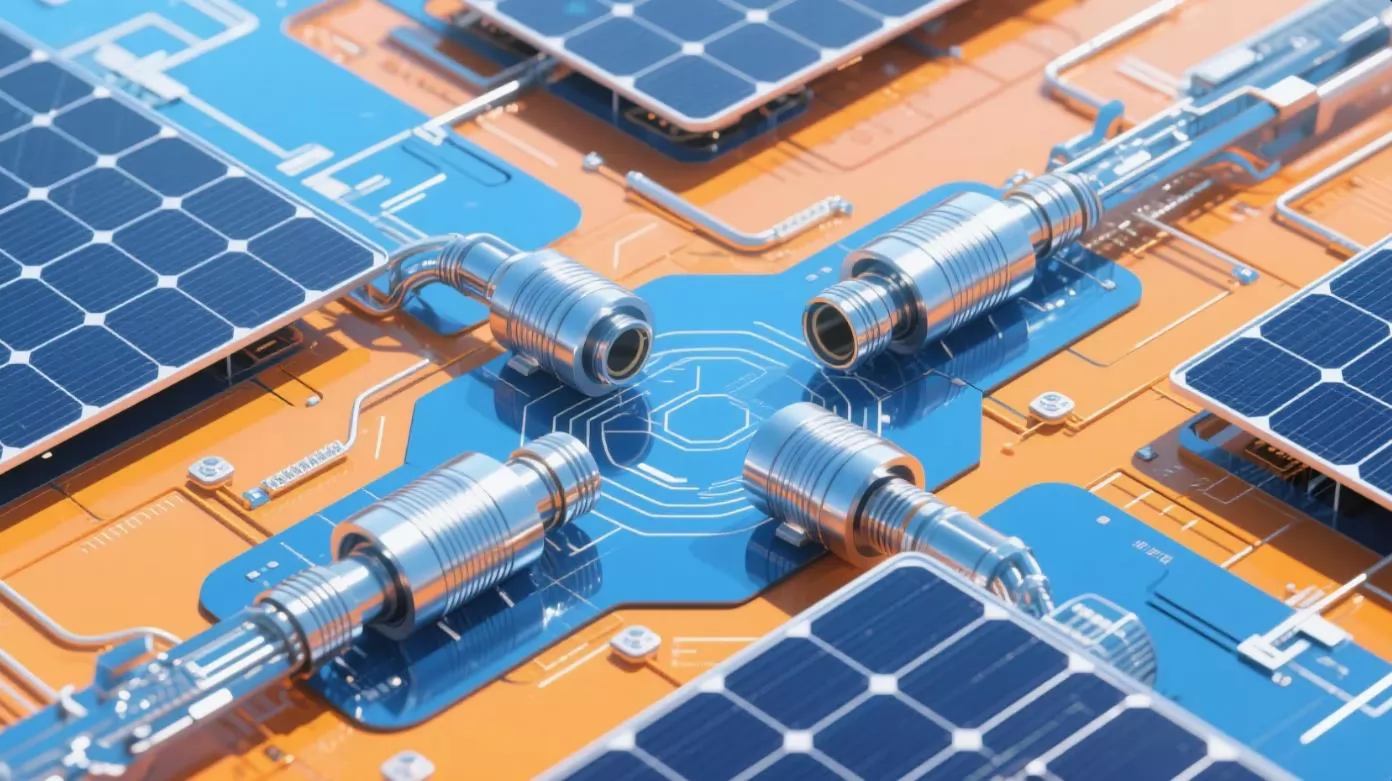
Several technological advancements are shaping the future of solar connectors:
Higher Voltage Ratings: As system voltages increase to improve efficiency and reduce balance-of-system costs, connectors with higher voltage ratings (2000V and beyond) are being developed.
Enhanced Current Capacity: Innovations in contact design and materials are enabling higher current ratings while maintaining or reducing physical dimensions.
Advanced Materials: New polymer compounds with improved UV stability, flame retardance, and temperature resistance are extending connector lifespans and environmental capabilities.
Smart Connector Technology: Integration of monitoring capabilities within connectors to provide real-time data on connection quality, temperature, and electrical performance.
Tool-free Designs: Evolution toward connector designs that require minimal or no specialized tools for field installation, reducing labor costs and installation errors.
Connector designs are adapting to support new developments in the broader solar industry:
Bifacial Modules: Specialized connector configurations that minimize shading on the rear surface of bifacial panels.
Half-Cut Cell Technology: Adapted connection systems for panels with multiple junction boxes or distributed connection points.
Building-Integrated Photovoltaics (BIPV): Low-profile connector designs that accommodate the aesthetic and structural requirements of BIPV systems.
Floating Solar Arrays: Enhanced waterproofing and corrosion resistance for floating photovoltaic installations.
Rapid Shutdown Compliance: Connector systems with integrated rapid shutdown capabilities to meet evolving safety regulations.
Environmental concerns are increasingly influencing connector design and manufacturing:
Recyclable Materials: Development of connector designs that facilitate end-of-life recycling and material recovery.
Reduced Environmental Impact: Manufacturing processes with lower carbon footprints and reduced use of hazardous substances.
Extended Lifespan: Innovations that further extend service life, reducing waste and replacement frequency.
Circular Economy Approaches: Take-back programs and refurbishment options for connector components.
The business landscape for solar connectors is also evolving:
Industry Consolidation: Mergers and acquisitions among connector manufacturers leading to more standardized offerings.
Enhanced Interoperability: Efforts toward greater cross-compatibility between different manufacturers' products while maintaining safety and performance.
Regional Manufacturing: Increased localization of production to reduce supply chain vulnerabilities and transportation costs.
Cost Optimization: Continuous innovation in manufacturing processes to reduce costs while maintaining or improving quality and performance.
Changing regulatory landscapes will continue to shape connector development:
Enhanced Safety Requirements: Evolving standards with increased focus on arc fault prevention, touch safety, and fire resistance.
Harmonization of Standards: Movement toward globally harmonized standards to facilitate international trade and deployment.
Performance Verification: More rigorous testing protocols to validate long-term performance claims.
Environmental Compliance: Stricter regulations regarding hazardous substances and end-of-life management.
Planning for the Future: When designing new solar installations, consider not only current requirements but also the potential for future expansion and technology upgrades. Selecting connector systems with some margin above minimum requirements may facilitate future adaptations without wholesale replacement.
Q: What exactly does the "8mm" in 8mm solar connector refer to?
A: The "8mm" designation typically refers to the approximate diameter of the connector housing at its connection point. This dimension has become a standard identifier for this class of connectors, similar to how "4mm" is used to describe MC4-type connectors.
Q: Are 8mm solar connectors waterproof?
A: Quality 8mm solar connectors are typically rated IP67 or IP68, meaning they are dust-tight and can withstand temporary immersion in water. However, they are designed for exposure to rain and moisture, not for permanent submersion.
Q: How long do 8mm solar connectors typically last?
A: High-quality 8mm connectors are designed to match or exceed the 25-30 year lifespan of solar panel systems. Their actual longevity depends on environmental conditions, installation quality, and the specific manufacturer's design and materials.
Q: Can I mix 8mm connectors from different manufacturers?
A: While physically possible in some cases, mixing connectors from different manufacturers is generally not recommended and may violate electrical codes and warranty terms. Subtle design differences can lead to increased resistance, poor connections, or safety issues.
Q: What tools do I need to install 8mm solar connectors?
A: Typical installation requires wire strippers, a proper crimping tool designed for the specific connector model, and possibly a specialized unlocking tool for disconnection. Some manufacturers offer tool kits specifically designed for their connector systems.
Q: What wire size can be used with 8mm connectors?
A: Most 8mm solar connectors accommodate solar cable in the range of 4mm² to 6mm² (equivalent to approximately 12 AWG to 10 AWG). Some specialized versions may accept larger or smaller conductors.
Q: Are 8mm connectors suitable for my DIY home solar project?
A: Yes, 8mm connectors can be appropriate for DIY solar projects, provided proper installation procedures are followed. However, many jurisdictions require electrical connections to be made by licensed professionals, so check local regulations before proceeding.
Q: How do I know if my 8mm connectors are properly installed?
A: Properly installed connectors should have: 1) No exposed conductor strands, 2) Properly seated and crimped contacts, 3) Fully engaged locking mechanisms, 4) Correctly tightened cable glands, and 5) No visible gaps in sealing elements. Many manufacturers provide specific visual indicators for proper connection.
Q: Can 8mm connectors be used in off-grid solar systems?
A: Yes, 8mm connectors are suitable for both grid-tied and off-grid solar applications. Their durability and weather resistance make them particularly valuable in remote off-grid installations where maintenance access may be limited.
Q: Are 8mm solar connectors UL listed?
A: Many 8mm connector models are available with UL certification to UL 6703 or related standards. Always verify specific certifications with the manufacturer or supplier if UL listing is required for your installation.
Q: Can I disconnect 8mm connectors while the system is generating power?
A: No. Disconnecting any solar connector under load can cause dangerous arcing that can damage components and create safety hazards. Always de-energize the circuit before disconnecting connectors.
Q: Are there counterfeit 8mm connectors in the market, and how can I avoid them?
A: Unfortunately, counterfeit solar components, including connectors, do exist in the market. To avoid them: 1) Purchase from authorized distributors or directly from manufacturers, 2) Be wary of unusually low prices, 3) Check for proper certification markings, and 4) Verify certification through the certifying body if in doubt.
8mm solar connectors represent a critical component in the photovoltaic system ecosystem, serving as the vital links that ensure reliable electrical connections throughout the system's operational lifetime. As we've explored throughout this comprehensive guide, these specialized connectors offer numerous advantages in terms of electrical performance, environmental durability, and installation convenience.
The specific design features of quality 8mm connectors—including robust locking mechanisms, effective sealing systems, and high-grade materials—directly contribute to system reliability and safety. Their ability to withstand harsh environmental conditions while maintaining consistent electrical performance makes them particularly valuable in challenging installation environments.
When selecting 8mm connectors for a solar installation, careful consideration of factors such as quality, certification, system requirements, and environmental conditions helps ensure optimal long-term performance. While initial cost is always a consideration, the potential long-term consequences of connector failure—including system downtime, repair costs, and safety risks—make quality and reliability the more important selection criteria.
As solar technology continues to evolve, connector technology will advance in parallel, addressing emerging requirements for higher voltages, enhanced monitoring capabilities, and improved sustainability. Staying informed about these developments helps system designers and installers make forward-looking decisions that maximize the value and performance of solar energy investments.
For solar installations of all scales—from residential rooftops to utility-scale solar farms—the humble connector plays a role far more significant than its physical size might suggest. By understanding the characteristics, applications, and proper selection criteria for 8mm solar connectors, stakeholders across the solar industry can contribute to more reliable, efficient, and durable photovoltaic systems.
For more information about our high-quality 8mm solar connectors and other solar connection solutions, visit Handa Connector or contact our technical support team today.
Discover this amazing content and share it with your network!

